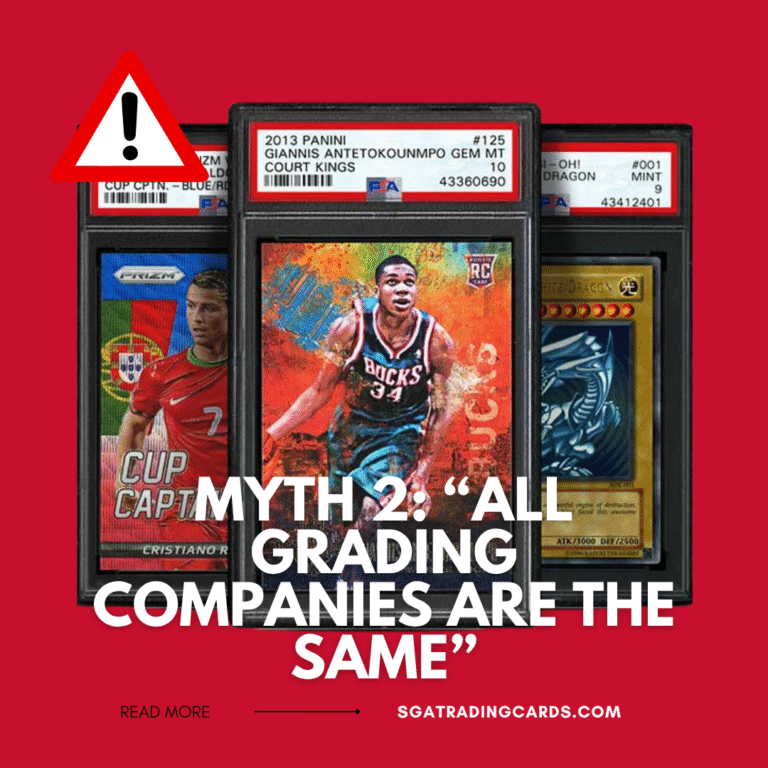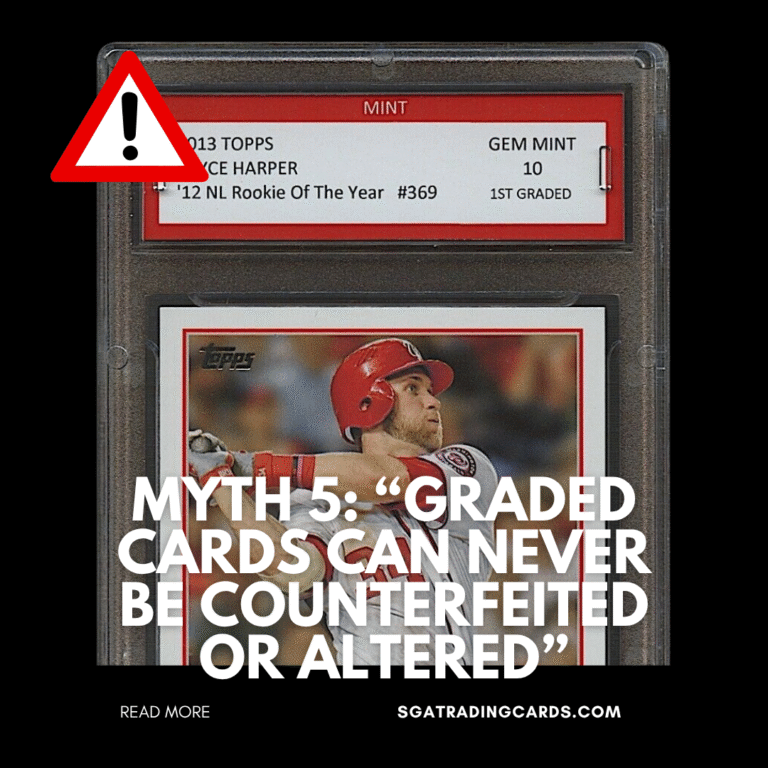SGA Grading
June 23, 2025

Grading has become a cornerstone of modern sports card collecting, providing authentication and condition assessment that can dramatically affect a card’s value. However, many myths and misconceptions about grading circulate within the hobby, sometimes leading to confusion or poor decision-making.
Here, we debunk the most common grading myths and share facts every collector should know.
Reality:
While a high grade can boost a card’s price, grading does not guarantee increased value. Some cards grade poorly and can lose value compared to raw versions. Additionally, the grading cost may outweigh the card’s worth for lower-value items.

Reality:
Different grading services have varied reputations, grading standards, turnaround times, and fees. PSA, BGS, and SGC are the most popular, each with pros and cons collectors should understand before submitting cards.
Reality:
Not all cards need grading. It’s best to grade high-value, rare, or sentimental cards. Grading low-value or common cards may not be cost-effective.
Reality:
Grading takes time—often weeks or months depending on service demand. Also, grading is subjective; two companies or graders might assign different grades to the same card.

Reality:
While grading adds security, counterfeiting and alterations can still occur. Collectors should be vigilant, verify grading labels, and buy from trusted sources.
Reality:
Higher grades usually correlate with higher value but investing solely on grade can be risky. Player popularity, card rarity, and market trends are equally important.
Grading can indeed add significant value and credibility to your collection—but only when you navigate it with a clear understanding of the facts. As Splint Invest explains, a PSA, BGS, or SGC grade “acts as a seal of approval,” assuring buyers of authenticity and condition, which often boosts value, though not always guaranteed.
Remember:
A high grade can command premium prices—but grading fees and the risk of a lower-than-expected grade may outweigh gains for lower-value cards.
Grading isn’t a one-size-fits-all service. PSA, BGS, and SGC each offer unique benefits—PSA brings widespread market trust, BGS delivers detailed subgrades, and SGC offers cost-effective reliability.
Grading isn’t instantaneous or infallible. Timeframes stretch from weeks to months, and experts don’t always agree—sometimes the same card yields different grades depending on the grader or service.
At SGA Trading Cards, our mission is to empower your decisions with strategic grading insight. From determining whether a card is worth grading to choosing the right service and timing, we’re here to help you maximize both value and enjoyment in your collection.
Grading well isn’t just about the label—it’s about using the right tool for your goals. Stay informed, stay strategic, and build a collection that delivers on promise.
Get tips, product drops, and break alerts—just for collectors.

Family-owned. Collector-driven.
© 2025 SGA Trading Cards. All Rights Reserved.
Proudly based in South Georgia.